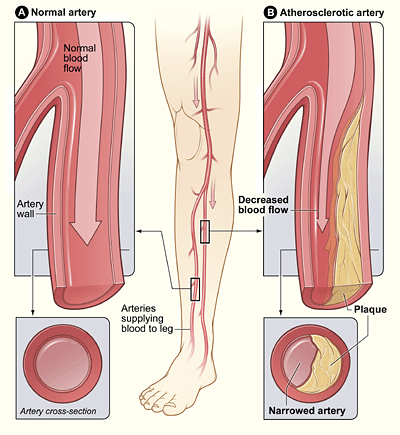One in every 20 Americans over the age of 50 has Peripheral Artery Disease (PAD), a condition that raises the risk for heart attack and stroke. Peripheral artery disease is known by many names, but is often just called "PAD". An older term that is sometimes used is "peripheral vascular disease (or "PVD"). The term PVD, like other general terms (e.g., "poor circulation"), is not specific to diseases that block blood flow in an artery.
PAD is a form of "atherosclerosis" that is caused when the arteries in your leg become slowly narrowed and blocked by plaque as a consequence of age, smoking, high blood cholesterol, high blood pressure or diabetes. A family history of PAD can also increase personal risk. PAD often occurs without symptoms, but in some individuals causes exertional discomfort or pain in the muscles, called "claudication". This type of muscle discomfort is reproducible with exercise and does not occur at rest.

For more information, please visit:
National Institutes of Health (NIH) - Stay in Circulation PAD education




